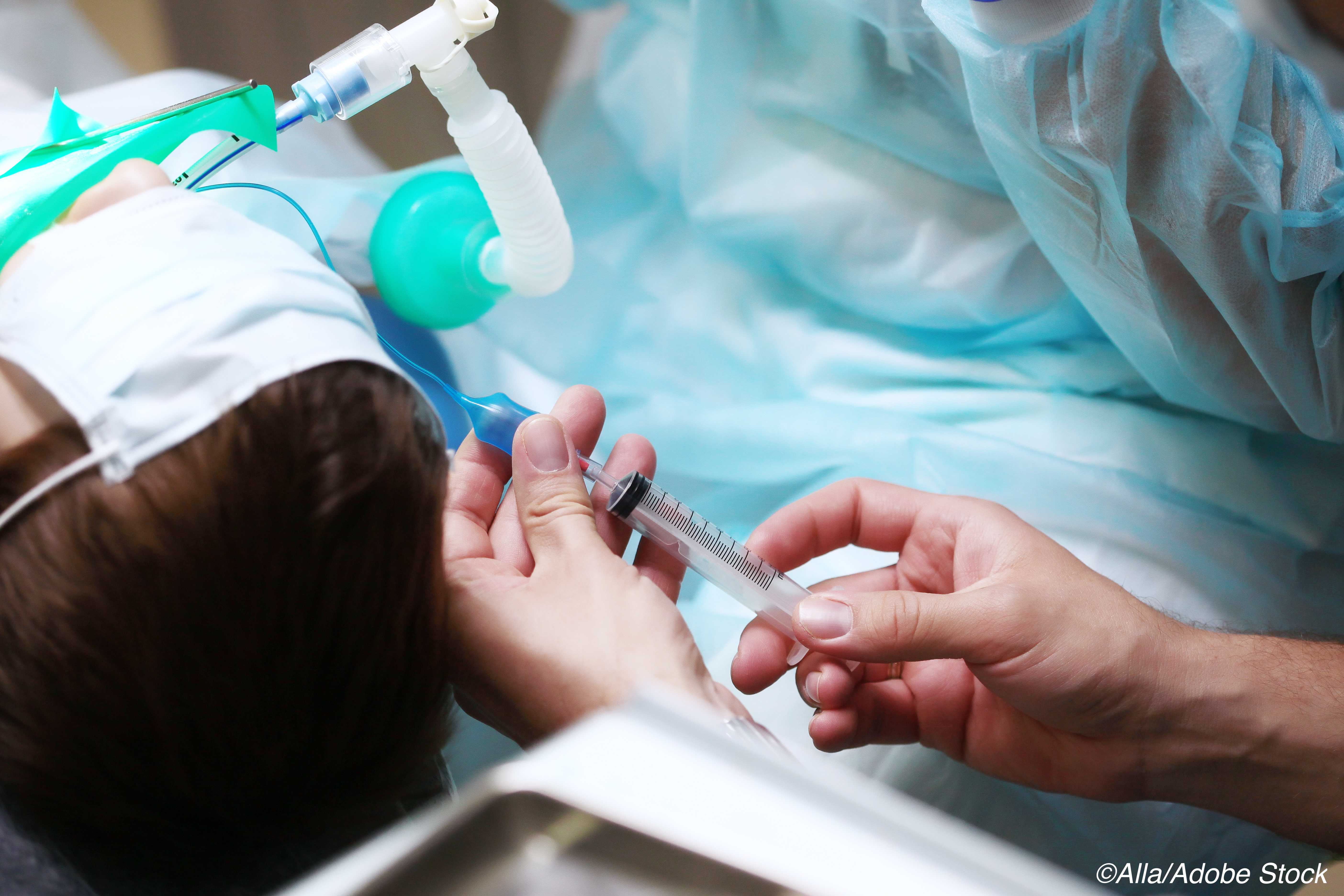
In an analysis involving 385 patients who underwent surgery for one to three hours, 63% of those exposed to background music and positive suggestions during general anesthesia required opioids within the first 24 hours postoperatively compared with 80% of non-exposed controls, Emil Hansen, MD, University Hospital, University of Regensburg, Regensburg, Germany, and colleagues reported in the British Medical Journal.
The intervention group also required a 28% lower dose of opioids during the same time interval, requiring a median of 3.3 morphine milligram equivalents (MME) (95% CI, 2.6-3.9 MME) compared to 4.6 MME (95% CI, 3.9-5.2 MME) for controls, investigators added.
“The efficacy of intraoperative therapeutic suggestions shown here, together with the low effort and costs necessary for implementation with no side effects observed or expected, makes it hard to argue against this simple method for reduction of postoperative pain and opioid use,” Hansen and colleagues wrote.
In an editorial accompanying the study, Daniel I. McIsaac, MD, and Sylvain Boet, MD, PhD, both of the University of Ottawa and The Ottawa Hospital and Ottawa Hospital Research Institute in Ottawa, Ontario, Canada, noted that “the implications of [Hansen et al’s] study may be paradigm changing from several perspectives.” They added that this research “might raise awareness of this inexpensive, potentially effective, and seemingly safe non-drug option for clinicians and patients worldwide.”
The study was carried out across five tertiary care hospitals in Germany. Following induction of anesthesia, the anesthetist connected patients to one of two identical MP3 players and played either an audiotape containing background music and therapeutic suggestions — played repeatedly for 20 minutes followed by 10 minutes of silence — or no audio throughout the operation.
“Our primary endpoint was requirement for opioids within 24 hours after surgery as delivered by nurse controlled or patient controlled analgesia,” they explained.
“On overage, the dose of opioids was reduced by 2.8 mg MME (95% CI, 1.2 to 4.3 MME)… corresponding to a saving of 34%,” Hansen and colleagues reported. In fact, the reduction in the need for opioids was already significant within the first 2 hours after surgery was completed (P<0.001). And, at the first postoperative evaluation of pain, before any postoperative analgesia was given, patients in the intervention group had significantly lower mean pain scores — 1.4 compared with a mean of 2.2 among controls (P=0.002).
More patients exposed to intraoperative music and therapeutic suggestions also had a pain score of less than 3, with 3 being the common threshold for pain treatment—while the average pain score remained 25% lower in the intervention group compared with controls within the first 24 postoperative hours.
Furthermore, after 24 hours, 61% of patients in the control group (95% CI, 54-68%) had a postoperative pain score of 3 or more compared with only 42% (95% CI, 35-50%) of patients in the intervention group (P<0.001), researchers added. The number needed to treat to save one patient from relevant pain was 5.3.
“With a saving of one third of postoperative opioids and noticeably fewer patients using opioids, the observed effect of the tested non-drug intervention not only reached statistical significance but is also of clinical interest,” Hansen and colleagues wrote.
They also argued that these results demonstrate that individual sensitivity to pain could play a role in opioid consumptions, suggesting that their results “might indicate a wide application of intraoperative therapeutic suggestions, especially in patients with high sensitivity to pain.”
In their commentary, McIsaac and Boet noted that 25 years ago, a Belgian anesthetist demonstrated the benefits of hypnosedation on patient outcomes. This technique—a combination of hypnosis, light drug sedation and local anesthesia—is also now common in some European centers in France and Belgium, as they pointed out.
Findings from the current study now raise the possibility that the subconscious might be an important target for improving the patient’s experience following surgery, McIsaac and Boet noted—however, they also cautioned that, “Moving forward, important questions remain.”
For example, the study authors used only a single German music track. “Just as a drug effect depends on dose, concentration, timing, and individual patient characteristics, music’s effect may depend on the rhythm, tone, volume, and listener’s characteristics,” the editorialists point out.
Furthermore, people from different cultures could react differently to the same words used during an intraoperative intervention, they noted.
However, as outpatient surgical volumes increase, “future trials should evaluate the effectiveness of therapeutic suggestion in pragmatic trials enrolling a wider population of patients and focused on important, patient reported measures of recovery,” the editorialists suggested, adding that, “although multicenter trials often bring a definitive answer to a research question, this trial is very much the beginning of an important line of inquiry that may change future practice.”
-
Patients exposed to therapeutic suggestions plus relaxing music during surgery needed lower doses of opioids postoperatively than non-exposed controls.
-
Low cost, non-drug intervention administered along with general anesthesia improved patient outcomes, including a reduced need for postoperative analgesia for fewer patients.
Pam Harrison, Contributing Writer, BreakingMED™
None of the authors or the editorialists had any financial disclosures to make.
Cat ID: 662
Topic ID: 659,662,728,791,662,663,730,192,922,925,934,159

